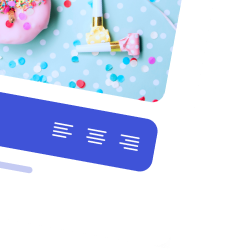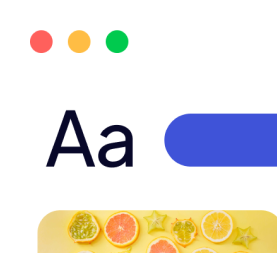Introduction
In today’s digital landscape, chatbots have become an integral part of business operations, customer support, and user engagement. From automating responses to enhancing customer interactions, AI-driven chatbots are transforming industries by streamlining processes and improving efficiency. However, as businesses seek more control, flexibility, and cost-effective solutions, open source chatbot are gaining significant traction.
Unlike proprietary chatbot platforms, open source solutions provide businesses with the ability to modify, customize, and scale their chatbot functionalities without vendor lock-in. This shift toward open source development is driven by the need for adaptability, transparency, and innovation, enabling companies to create AI-powered assistants tailored to their unique needs.
Why Open Source Chatbots Are Gaining Popularity
The increasing demand for open source chatbots stems from their numerous advantages:
- Flexibility & Customization – Developers can tweak and enhance the chatbot’s capabilities, integrating them seamlessly with existing systems and specific business requirements.
- Cost-Effectiveness – Open source solutions eliminate licensing fees, reducing the overall cost of chatbot deployment and maintenance.
- Community-Driven Innovation – With a global network of developers contributing to improvements, open source chatbots evolve rapidly with new features, security updates, and AI advancements.
- Transparency & Security – Unlike proprietary software, open source chatbots provide full access to their source code, allowing businesses to assess security risks and make necessary modifications.
As businesses continue to prioritize automation and AI-driven communication, open source chatbots are emerging as the go-to choice for companies looking for robust, scalable, and cost-efficient solutions.
Why Choose an Open Source Chatbot?
Open source chatbot platforms offer several advantages over closed-source alternatives, making them an ideal choice for businesses and developers alike. Here’s a closer look at the key benefits:
Customization: Tailor Chatbots to Specific Business Needs
Open source chatbots allow developers to modify, train, and fine-tune models according to unique business needs. Unlike proprietary chatbots, where features are limited by vendor specifications, open source solutions enable:
- Personalized conversational flows to match brand tone and customer expectations
- Integration of custom AI models for improved language understanding and automation
- Multilingual support for serving a global audience
- Scalability to expand chatbot capabilities as business needs evolve
Cost Savings: Avoid Licensing Fees and Proprietary Restrictions
One of the biggest hurdles in deploying a chatbot is the cost of proprietary licenses and API usage fees. Open source chatbots eliminate these expenses, allowing businesses to:
- Deploy chatbots without recurring subscription costs
- Avoid vendor lock-in, giving full ownership of chatbot data and infrastructure
- Allocate budget towards AI training, server scaling, and further chatbot enhancements
Community Support: Continuous Innovation from Global Developers
A strong community of developers and AI researchers continuously contribute to open source chatbot projects, ensuring:
- Regular updates with new features and security patches
- Extensive documentation and open forums for troubleshooting and best practices
- A collaborative environment where innovations happen faster than closed-source competitors
Integration Capabilities: Seamless Connectivity with Various Platforms
Modern businesses use multiple communication channels, from social media and websites to CRM systems and mobile apps. Open source chatbot platforms are designed to integrate effortlessly with:
- WhatsApp, Facebook Messenger, Slack, and Telegram for omnichannel engagement
- CRM tools like Salesforce and HubSpot for customer relationship management
- E-commerce platforms like Shopify and WooCommerce for automated sales and support
- Voice assistants and IoT devices, enabling voice-based AI interactions
Top Open Source Chatbot Platforms for Businesses and Developers
With numerous open source chatbot frameworks available, businesses must choose one that best suits their requirements. Below are five of the most powerful open source chatbot platforms, each catering to different use cases and expertise levels.
Rasa – Advanced NLP and Conversational AI
Rasa is one of the most advanced open source chatbot frameworks, ideal for businesses requiring highly intelligent AI-driven conversational agents.
Best for enterprise AI chatbots, customer service automation, and multilingual bots.
Key features:
- Rasa NLU (Natural Language Understanding) for training chatbot AI
- Rasa Core for defining complex conversation flows with contextual memory
- Custom deployment options, including cloud, on-premise, and hybrid
- GDPR-compliant with full control over user data
Use case: A financial institution uses Rasa to develop a chatbot that provides automated investment advice and fraud detection alerts.
Botpress – Modular and Developer-Friendly
Botpress is designed to make chatbot development easier for developers and businesses through a visual editor and modular architecture.
Best for developers who want to build chatbots with minimal coding effort.
Key features:
- Visual flow builder for designing chatbot conversations
- Pre-built integrations with major messaging platforms
- Modular architecture, allowing businesses to add only the features they need
- On-premise deployment for data privacy
Use case: An e-commerce store integrates Botpress to automate order tracking, returns, and customer support inquiries.
Microsoft Bot Framework – Enterprise-Ready and Scalable
Backed by Microsoft, this framework is built for large enterprises requiring AI-driven chatbots that seamlessly integrate with Microsoft’s ecosystem.
Best for large-scale organizations needing enterprise-grade chatbot solutions.
Key features:
- Pre-built AI capabilities powered by Microsoft’s Cognitive Services
- Omnichannel deployment, including Microsoft Teams, Skype, and Slack
- Advanced security and compliance features for enterprise environments
- AI-driven bot orchestration, allowing bots to hand off conversations to human agents when needed
Use case: A multinational company uses Microsoft Bot Framework to automate HR inquiries, onboarding new employees with AI-driven responses.
ChatterBot – Machine Learning-Driven Simplicity
ChatterBot is a Python-based chatbot framework that focuses on simplicity and ease of use. It is an excellent option for developers experimenting with AI-driven chatbots.
Best for small businesses and developers new to chatbot AI.
Key features:
- Machine learning-based response training with minimal data input
- Supports multiple training datasets for chatbot learning
- Easily integrates with Python-based applications
- Basic conversational memory, improving responses over time
Use case: A small business creates a simple FAQ chatbot using ChatterBot to handle customer support queries on their website.
DeepPavlov – Best for Research and AI-Driven Chatbots
DeepPavlov is a highly sophisticated NLP framework developed for AI research and advanced conversational AI models.
Best for AI researchers, data scientists, and advanced chatbot developers.
Key features:
- State-of-the-art NLP models for text and voice processing
- Pre-trained deep learning models for chatbot development
- End-to-end pipeline development, enabling full chatbot training
- Best for academic and experimental AI projects
Use case: A university research lab uses DeepPavlov to develop an AI-driven chatbot for mental health support, analyzing sentiment and providing guided therapy sessions.
Key Features to Consider in an Open Source Chatbot
When selecting an open-source chatbot, evaluating its core functionalities is essential to ensure it aligns with your business goals. The following features play a crucial role in chatbot performance, adaptability, and user experience.
AI and NLP Capabilities
Artificial intelligence and natural language processing (NLP) determine how well a chatbot understands and responds to human conversations. Advanced AI-powered chatbots leverage machine learning, deep learning, and NLP models to improve user interactions.
- Intent recognition: Helps the chatbot identify user intent accurately, ensuring relevant responses.
- Entity extraction: Recognizes specific data points, such as names, dates, locations, and product names.
- Context retention: Allows the chatbot to remember past interactions, improving the flow of conversations.
- Sentiment analysis: Detects user emotions, enabling chatbots to respond appropriately based on tone.
- Self-learning capabilities: Some chatbots can improve their responses over time by analyzing past interactions and adjusting accordingly.
Multilingual Support
Businesses operating globally require chatbots that can handle multiple languages efficiently. A good open-source chatbot should provide:
- Language detection: Automatically identifies the language a user is speaking and adjusts responses accordingly.
- Machine translation: Enables chatbots to translate text in real-time when handling multilingual conversations.
- Custom language models: Allows businesses to train the chatbot in industry-specific jargon and slang.
- Multi-script support: Recognizes and processes different alphabets, including Latin, Cyrillic, and Chinese characters.
Omnichannel Integration
A chatbot should provide seamless interactions across multiple platforms and communication channels to offer a unified customer experience. Important integration capabilities include:
- Website and mobile app support: Ensures users can interact with the chatbot on various platforms.
- Social media messaging: Connects with WhatsApp, Facebook Messenger, Instagram, Telegram, and Twitter.
- Voice assistants: Integrates with Alexa, Google Assistant, and other voice-enabled devices.
- CRM and ERP systems: Syncs with platforms like Salesforce, HubSpot, and Microsoft Dynamics for personalized interactions.
- E-commerce and payment gateways: Supports Shopify, WooCommerce, PayPal, and Stripe for transactional interactions.
Security and Compliance
Data privacy and security are crucial when deploying chatbots, especially for industries handling sensitive information such as healthcare, finance, and legal services.
- Data encryption: Ensures end-to-end encryption of messages to prevent unauthorized access.
- Role-based access control (RBAC): Limits user permissions based on roles to protect confidential data.
- Compliance with regulations: Adheres to GDPR, HIPAA, CCPA, and other industry-specific compliance requirements.
- On-premise deployment: Allows businesses to host chatbots on their own servers for greater security and data control.
- Audit logs and monitoring: Tracks chatbot interactions and logs activity for compliance and quality assurance.
Customization and Scalability
An open-source chatbot should provide flexibility to adapt to business-specific requirements and scale as demand increases.
- Modular architecture: Enables businesses to add or remove functionalities without overhauling the chatbot system.
- Custom plugins and APIs: Allows integration with third-party applications for enhanced capabilities.
- Scalable cloud infrastructure: Supports deployment on AWS, Google Cloud, or Azure for high availability and performance.
- Adaptive learning models: Enhances chatbot intelligence over time based on user interactions.
- Workflow automation: Enables businesses to automate repetitive tasks such as appointment scheduling, order tracking, and FAQ handling.
How to Get Started with an Open Source Chatbot
Developing an open-source chatbot involves a structured approach to ensure it meets business objectives while delivering an optimal user experience.
1. Define Your Chatbot’s Purpose
Before selecting a chatbot framework, clearly outline its primary function. Determine whether the chatbot will handle:
- Customer support queries
- Lead generation and sales assistance
- Appointment scheduling
- Order processing and tracking
- Internal business automation (HR, IT support, finance)
A well-defined goal ensures that chatbot development remains aligned with business needs.
2. Choose the Right Platform Based on Business Needs
Selecting an open-source chatbot platform depends on factors such as required AI complexity, integration capabilities, and deployment preferences.
- For advanced AI and NLP: Rasa, DeepPavlov
- For modular development and customization: Botpress
- For enterprise-grade solutions: Microsoft Bot Framework
- For simple AI-driven chatbots: ChatterBot
Consider factors like community support, ease of integration, and technical expertise required before making a decision.
3. Set Up and Train the Chatbot with Real-World Data
Once the chatbot framework is selected, the next step is configuring and training it with industry-specific datasets.
- Install the chatbot framework on a local server or cloud environment.
- Define intent categories and train the chatbot using sample queries.
- Implement entity recognition for extracting relevant information.
- Integrate external APIs or databases to provide dynamic responses.
- Use real-world datasets to improve accuracy and response quality.
4. Test, Deploy, and Continuously Optimize
Before launching the chatbot, thorough testing ensures it performs optimally across different use cases.
- Unit testing: Verifies that chatbot responses align with expected outputs.
- A/B testing: Compares different versions of chatbot responses to determine the most effective interactions.
- User feedback analysis: Gathers input from real users to refine chatbot performance.
- Performance monitoring: Uses analytics tools to track chatbot engagement, response time, and user satisfaction.
- Continuous updates: Refines the chatbot by retraining AI models and updating conversation flows based on new data.
Deploy the chatbot on the desired platforms (website, mobile app, social media, CRM) and monitor its performance to ensure ongoing improvement.
Future Trends in Open Source Chatbots
As artificial intelligence continues to evolve, open-source chatbots are becoming more sophisticated, offering businesses and developers new opportunities to enhance user engagement. The future of chatbot development is shaped by AI-driven personalization, voice-enabled and multimodal interactions, and ethical AI considerations. Here’s a deeper look at these emerging trends.
AI-Driven Hyper-Personalization
Chatbots are transitioning from generic, scripted responses to highly personalized interactions. AI-driven hyper-personalization enables chatbots to understand individual user preferences, behaviors, and contexts, providing a more tailored experience.
Key advancements driving hyper-personalization:
- Behavioral analytics: Chatbots analyze user interactions, past queries, and browsing history to anticipate needs and provide relevant recommendations.
- Dynamic response generation: Instead of relying on predefined responses, AI-driven chatbots generate replies dynamically based on real-time user inputs.
- Emotion recognition: Sentiment analysis allows chatbots to adjust tone and language based on user emotions, making conversations more empathetic.
- Context-aware AI: Chatbots retain conversational context over multiple interactions, improving follow-ups and long-term user engagement.
- AI-powered recommendations: Integration with recommendation engines enables chatbots to suggest products, services, or content based on user interests.
Use case example:
An e-commerce chatbot utilizes AI-driven hyper-personalization by analyzing a customer’s past purchases, preferred brands, and browsing behavior. When a user asks for fashion recommendations, the chatbot suggests items that match their style, size, and budget in real-time.
Voice and Multimodal Interactions
The next generation of chatbots is expanding beyond text-based interactions to include voice and multimodal capabilities. This shift allows users to interact with chatbots more naturally, using a combination of voice commands, text inputs, and visual elements.
Key innovations in voice and multimodal chatbots:
- Speech-to-text and text-to-speech (STT/TTS): Enables voice-based interactions, making chatbots more accessible and user-friendly.
- Multimodal AI: Combines text, voice, and images for richer interactions. For example, a chatbot could recognize an uploaded image and provide relevant details.
- Natural language understanding (NLU) for voice AI: Improves the chatbot’s ability to comprehend spoken language with varying accents and dialects.
- Cross-device integration: Chatbots can function seamlessly across smartphones, smart speakers, and IoT devices.
- Conversational AI with augmented reality (AR): Emerging use cases include virtual shopping assistants that allow users to try products using AR before making a purchase.
Use case example:
A healthcare chatbot with voice and multimodal interaction capabilities allows patients to schedule appointments using voice commands. The chatbot can also display available time slots visually and send confirmation messages via text.
Ethical AI and Responsible Chatbot Development
As AI-powered chatbots become more intelligent, ethical considerations and responsible AI development are gaining importance. Businesses must ensure that their chatbots operate transparently, fairly, and without biases while protecting user privacy.
Key principles of ethical AI in chatbot development:
- Bias-free AI models: Developers must ensure chatbots do not reflect biases based on gender, race, or socioeconomic factors. Regular audits and diverse training datasets can mitigate AI bias.
- Transparent AI decision-making: Users should understand how chatbots generate responses. Explainable AI (XAI) methods help provide insights into chatbot behavior.
- Privacy and data security: Open-source chatbots should adhere to global data protection regulations like GDPR, CCPA, and HIPAA, ensuring secure user interactions.
- User control and consent: Users should have the option to opt out of AI-based interactions or request human intervention when needed.
- AI accountability: Businesses deploying AI chatbots must be responsible for their actions, ensuring that chatbot interactions align with ethical and legal standards.
Use case example:
A financial institution deploying an AI-driven chatbot ensures transparency by allowing users to review chatbot-generated recommendations and providing clear explanations for loan approvals or investment suggestions.
Conclusion:
The evolution of chatbots has transformed the way businesses interact with customers, automate workflows, and enhance user experiences. Open-source chatbots, in particular, offer unmatched flexibility, cost-effectiveness, and customization, making them an ideal solution for organizations looking to harness AI-driven conversational interfaces without being restricted by proprietary limitations.
Leveraging Open Source Chatbots for Business Growth
By integrating an open-source chatbot, businesses can gain a competitive edge by providing seamless, intelligent, and personalized customer interactions. Whether used for customer support, lead generation, appointment scheduling, or internal process automation, open-source chatbots streamline operations while improving efficiency.
Key benefits businesses can leverage:
- Customization to fit unique business needs – Open-source platforms allow companies to design chatbots tailored to industry-specific requirements, ensuring that interactions align with their brand voice and objectives.
- Cost savings without licensing fees – Unlike proprietary solutions, open-source chatbots eliminate the need for expensive subscriptions, providing an affordable yet powerful alternative.
- Community-driven innovation – The open-source ecosystem thrives on contributions from developers worldwide, ensuring continuous improvements, new features, and robust security updates.
- Seamless integration across platforms – Businesses can deploy chatbots across multiple channels, including websites, mobile apps, social media, and CRM systems, ensuring a cohesive customer experience.
- Scalability for future growth – As businesses expand, open-source chatbots can be adapted and enhanced with new capabilities, ensuring they remain effective as customer demands evolve.
Encouragement to Experiment and Innovate
The true power of open-source chatbots lies in their ability to be modified, enhanced, and experimented with. Businesses and developers are encouraged to explore different chatbot frameworks, experiment with AI and natural language processing (NLP) models, and continuously refine chatbot capabilities based on real-world user interactions.
- Test different AI frameworks – Whether it’s Rasa for advanced NLP, Botpress for modular development, or DeepPavlov for research-driven applications, experimenting with different platforms helps identify the best fit for specific use cases.
- Integrate with AI-powered analytics – Leveraging machine learning and data-driven insights can help optimize chatbot responses, improve user engagement, and enhance automation efficiency.
- Enhance chatbot intelligence over time – Implementing reinforcement learning and self-learning algorithms ensures that chatbots become more effective with continuous user interactions.
- Stay updated with emerging trends – Voice interactions, multimodal AI, and ethical AI considerations are shaping the future of chatbots. Businesses should stay ahead by adopting these advancements in their chatbot strategies.
Ready to build a smarter chatbot for your business? Explore the best open-source platforms today and take control of your AI strategy. Need expert guidance? Kaspar Consulting is here to help!
AI Chatbots: Transforming Customer Service for the Digital Age




